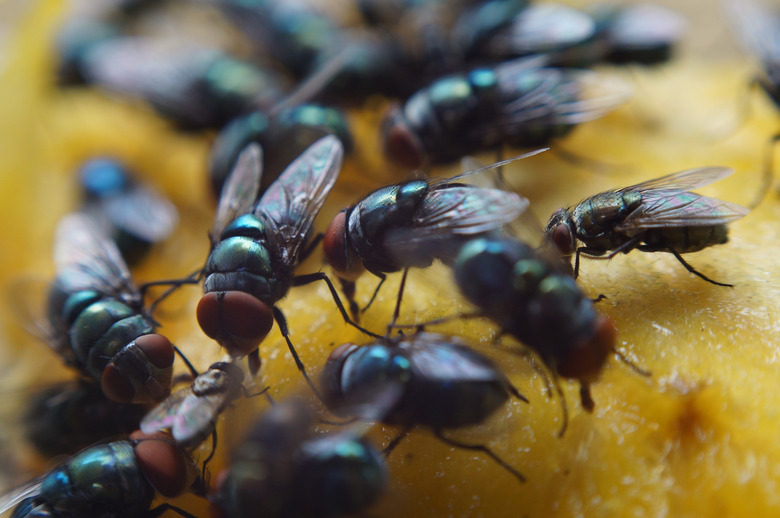Colors That Attract Black Flies
The black fly is one of various insects classified as species "Simulium." The term "black fly" is not normally used when describing other Simulium-classified insects, such as gnats or smaller black flying midges. Black flies range from the merely annoying Simulium luggeri to the dangerously aggressive Simulium venustum. These are a couple of the reasons people generally regard black flies with disdain.
Identify the Fly
Identify the Fly
Just because a fly is black does not mean it can be categorized as a black fly. Shorter antennae, veined front wings and a humped back, or prothorax, are key differentiating features separating the true black fly from other similar insects.
Identify the Color Range
Identify the Color Range
A 1951 study reported in the "Canadian Journal of Zoology" showed that black flies favor dark blues, browns and blacks, in that order. The black fly's least favored colors include whites and grays. The experiment's results convincingly suggest that black flies generally prefer darker colors.
Colors In Between
Colors In Between
There are colors that cannot be easily classified as light or dark. When face with these colors, black flies do express a preference. When given the choice, explains University of Minnesota entomologist Jeffrey Hahn, flies avoid brighter colors. The journal reported that black flies select middle colors, such as reds and greens, before lighter ones when offered colors in between the two extremes, but not before the darker blues, blacks and browns.
Applying Color Research
Applying Color Research
By readily applying the journal's research, hikers, farmers, entomologists and other people who spend time outdoors can repel or attract black flies. When attracting flies, whites and lighter colors should not be used. Darker-colored items are more suitable.
Cite This Article
MLA
Farkas, Andrea. "Colors That Attract Black Flies" sciencing.com, https://www.sciencing.com/colors-attract-black-flies-8439511/. 13 March 2018.
APA
Farkas, Andrea. (2018, March 13). Colors That Attract Black Flies. sciencing.com. Retrieved from https://www.sciencing.com/colors-attract-black-flies-8439511/
Chicago
Farkas, Andrea. Colors That Attract Black Flies last modified March 24, 2022. https://www.sciencing.com/colors-attract-black-flies-8439511/
